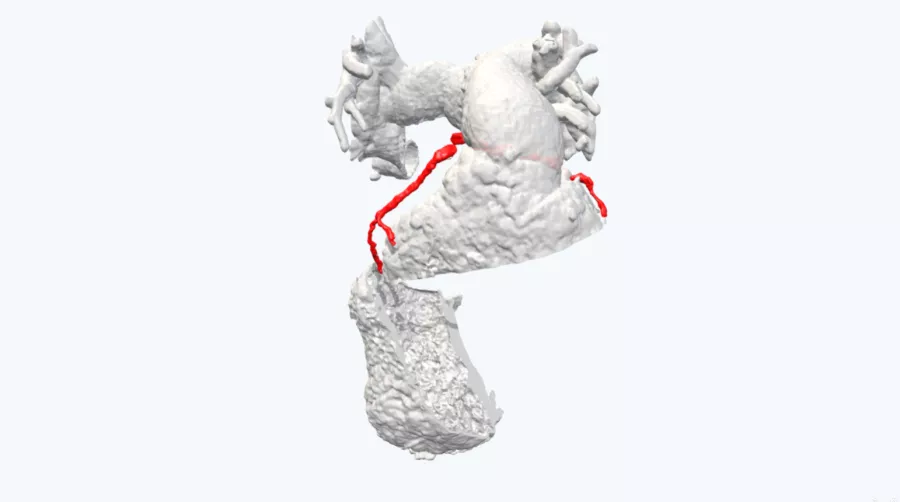A 15-year-old female patient presented with a condition known as right ventricular outflow tract (RVOT) tachycardia. RVOT ventricular tachycardias (VT) manifest without underlying structural heart issues and are classified as idiopathic ventricular arrhythmias. These arrhythmias are believed to arise from adenosine-sensitive, cyclic AMP mediated, triggered activity, and are prevalent among adolescents and young adults. (Source: Abdel J. Fuenmayor MD, Journal of Atrial Fibrillation)
Confronted with uncertainty about the most optimal surgical approach, the surgeon requested a 3D printed replica of the patient’s heart. Using the patient’s CT scan, Axial3D transformed this information into a data rich 3D visualization as well as an accurate 3D printed model.
With the model in hand, the surgical team completely revised the planned approach based on the additional insights. Furthermore, the cardiologist used the 3D model to explain the surgical procedure to the parents of the young patient. The 3D model not only proved invaluable for educating the patient and her family but also played a pivotal role in the process of obtaining informed consent.
“When the parents have the model in their hands they not only have a better understanding of the pathology and surgical plan but they can give informed consent.”
Disclaimer: Details of Axial3D’s regulatory clearance for diagnostic use cases are outlined here. For all other uses of Axial3D solutions, they should be used for demonstration and education purposes only.



